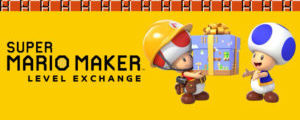Unique, culturally inspired visuals and lore, and uniquely fun and complex blend of strategy and action gameplay
JoyCon 2 mouse features are present in menus, but feel as they could be used elsewhere
Amalgamation is defined as the action, process, or result of combining or uniting. This feels like the perfect word to describe Kunitsu-Gami: Path of the Goddess, developed and published by Capcom for Nintendo Switch 2. It pulls inspiration for all pieces of itself from many different sources, be that in its gameplay mechanics, story, art style, score, or user interface. Its identity is shaped by all of these elements, coming together to create a game that is unlike anything else. This identity is wildly unique, interesting, and somewhat bizarre at times, but that’s not necessarily a bad thing.
The game’s art style is highly connected to its story and setting. Right off the bat, the bizarre aspect of the game mentioned above starts to become apparent. At first, the world itself seems somewhat unremarkable on the surface, with a design heavily based visually and historically on Japan’s feudal era. Sounds relatively normal, right? Feudal Japan is nice and all, but there’s also a substance called the “defilement” which changes everything.
This is the bizarre part. Villages on Mt. Kafuku have been covered with this tendril-like, grotesque looking substance that seems to be growing adornments that are oddly colorful and wildly visually appealing in confusing ways. Torii Gates covered in this substance have popped up in these villages, releasing creatures known as the Seethe into them. Seethe creatures all have heavily varied looks and sizes that go hand in hand with their attacks, but looking just as beautifully grotesque as the defilement that took the villages.
Speaking of villages, the goal of the game is freeing them from the defilement. Soh, the main character, is tasked by Yoshiro, the Maiden of Mt. Kafuku to protect her as they both descend the mountain and rid the many villages of defilement and the Seethe. Remember the word amalgamation? Kunitsu-Gami’s gameplay is where that word comes into play. Core to the gameplay are levels, the villages, that you must free by going around clearing various areas of defilement.
Clearing the defilement will net you a strange currency called crystals which can be used for multiple purposes, as well as villagers who can help you protect Yoshiro. While doing all this collecting, it is important to pay attention to the time of day, as the Seethe only enter the mortal plane at night. This is where a unique and fun balancing act comes into play and the first element of the amalgamation: strategy. If you don’t pay attention to the time, the Seethe will start to come out without any safeguards to protect Yoshiro on her path to cleanse the village and close the Torii Gate.



Most tower defense games stop there, leaving your tower to be destroyed or protected based only on what you place down. Kunitsu-Gami is much more involved. At any point, you can command villagers to move to a different location, but that isn’t the funnest part! Main character Soh is directly controlled by you in real time. So, the game becomes a mixture of strategy, tower defense, and a bit of action role playing for good measure.



It is very honorable to do all of this to save the villagers and the mountain from defilement, but no game is complete without some type of incentive. Collectibles can be found in levels, boss battles, and earned from repairing villages after clearing them from defilement. Some of them are used for progression, giving higher stats and abilities to Soh, Yoshiro, and the villagers. Beating bosses and enemies gains you access to folklore about those enemies in the form of Ema Plaques, along with the ability to view the in-game models in the menu.
One small area where the game could be improved is the Switch 2 special features. On Nintendo Switch 2, there is a new control option where the Joy-Con 2 can be used as a mouse. In this game, the mouse can be used to traverse the menus and click around in strategy mode to send villagers to certain locations. This is fun, but it feels like this feature could be used in more places, rather than just in the menus. For example, the mouse can be used in some other games for camera movement as well. This would be a nice thing to add as an extra function for the new system.
Kunitsu-Gami: Path of the Goddess is such a culturally deep and thought provoking game, both in story and in gameplay. All of these pieces of the amalgamation mentioned throughout this review come together into a unique gameplay experience that has a deep strategy system, but provides action combat to balance out the strategy for those more interested in that type of gameplay. In between the strategy and action, the ability to repair villages and use collectibles to make yourself stronger provides sufficient incentive to keep playing. In the end, the unique experience that Kunitsu-Gami provides to players is unlike any other game and that fact alone is what makes it worth playing, as you won’t find this amalgamation anywhere else.
Nintendojo was provided a copy of this game for review by a third party, though that does not affect our recommendation. For every review, Nintendojo uses a standard criteria.




 ShareThis
ShareThis





